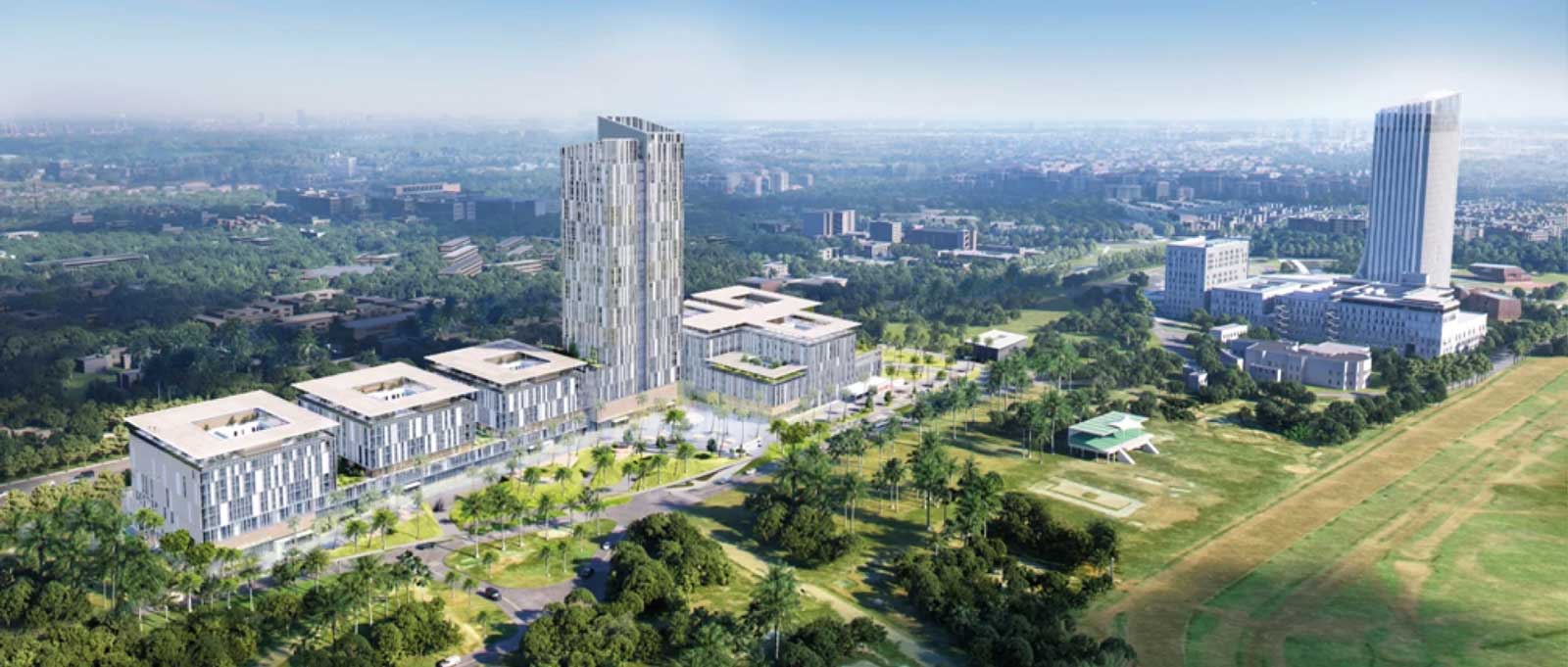Accessibility for a Healthier Tomorrow
Nov 1, 2024

How a hospital construction boom in Morocco is driving the VT market
Morocco’s multibillion-dollar plan to build modern health facilities is expected to drive demand for vertical-transportation (VT) equipment and technology. The Northwest African country’s Ministry of Health is striving to improve the medical care available to Morocco’s slightly more than 37 million people, as well as address worrisome health indicators such as being the country with the second-highest maternal mortality rate. “Morocco is currently implementing one of the most ambitious and comprehensive health system reforms in the world, demonstrating its commitment to building human capital,” stated a report by World Bank, which is providing part of the funding for the healthcare expansion plan.
The initiative is already creating work for major VT companies and their suppliers, including at the Mohammed VI International University Hospital in Rabat, a EUR450-million (US$497.4-million) project being undertaken by Bymaro, the Moroccan subsidiary of Paris-based engineering group Bouygues Construction. Scheduled for completion in September 2025, the new hospital’s VT system will be supplied and installed by Otis and include general passenger elevators, patient elevators and goods elevators, according to Bouygues spokesperson Candice Broche.
The facility consists of four six-story buildings and a 25-story tower sitting on more than 275,000 m2. It will house first-class healthcare and teaching facilities, including 553 beds and 20 operating theaters equipped with the most advanced medical technology. Twenty-four elevators — 22 passenger units and two for freight — will serve the eight floors in the education building. In the tower, 22 passenger elevators — including two for firefighters and two for VIPs — will be installed.
At the hospital, which has eight floors, there will be 31 elevators, including six freight elevators, 12 passenger elevators and 13 patient lifts. Two of the lifts will be for VIPs, according to Broche. Broche said the elevators in the building will comply with French elevator code.
All elevators, with capacity of 1000 to 2500 kg, will have belts as a drive system. These will comply with the EN 81-20 elevator and fire safety code. The speed of the elevators will range from 1 m/s to 1.6 m/s for the hospital and education building and from 1.75 m/s to 3.5 m/s for the tower. Tower elevators will be equipped with Otis’ Compass 360 destination-dispatch system, which Broche said “offers a versatile solution depending on your needs.”
Compass 360, which according to Otis is now installed in more 10,000 elevators, 300 cities and 60 countries, “continually adapts and reconfigures to optimize efficiency.” According to Broche, the Compass 360 system focuses “on everything from contiguous stops to walk and wait times, and the sophisticated algorithms maximize opportunities to enhance the passenger experience.” The system “moves people more efficiently, cutting wait and journey times by up to 50% compared to conventional dispatching systems and directs elevators where they’re needed, [in turn] eliminating duplicate stops.”
Meanwhile, to save on wiring and installation costs, Otis has provided options for Compass 360 fixtures, including security readers installed directly into the predestination system.
Broche said:
“Moreover, all elevators will be equipped with a supervision system called the Elevator Management System to ensure real-time information, as well as the visualization and control to respond to a building’s changing occupant and traffic patterns.”
New hospitals equipped with top-notch VT equipment promise to enhance the reputation of health care in Morocco, which also ranks as one of the countries with the highest child mortality rates in North Africa, as well as one of the nations where the number of doctors and hospital beds per inhabitant is well below average.
Scheduled for completion in September 2025, the new hospital’s VT system will be supplied and installed by Otis and include general passenger elevators, patient elevators and goods elevators.
The government of Morocco is collaborating with development partners including the World Bank and the European Investment Bank to build the new hospitals. With these new facilities, Morocco’s VT market is no longer confined to commercial and residential buildings.
The latest in Morocco’s hospital construction spree, the Mohammed VI International University will complement healthcare services provided by the existing six university hospitals in Rabat, Casablanca, Fez, Oujda, Marrakech and Tangier. Morocco also has 159 public hospitals and more than 14,300 medical staff members in the public sector, as well as a separate military healthcare system that boasts of six hospitals and a medical center.
The new hospital is Bymaro’s third hospital project in Morocco in five years, with the building’s design expected to support the reduction of carbon emissions by more than 40% compared with benchmark projects elsewhere.
This new hospital, designed by AIA Architects, also has 15 lecture theatres, 72 teaching rooms and 217 rooms for practical work, all featuring the latest audiovisual technology to ease management of the facility’s operations. The design of the Mohammed VI International University Hospital integrates three complementary structures that include the tower, which will house the consultations, the hospital and university administration areas, as well as a number of teaching areas. The main hospital will house the technical facilities, emergency services, diagnostic and interventional imaging facilities, intensive care, inpatient wards and logistics.
The new project, said Broche, aims “to become a benchmark for future university hospitals in Morocco in terms of architecture and quality of both care and teaching.”
The project is aiming for Exceptional HQE certification for the teaching component, including the installation of 8,800 m2 of photovoltaic panels with an output of two MWp 1, which will cover more than 10% of the site’s overall energy needs. Stating Bouygues is proud to have been chosen to construct the hospital, Bouygues Deputy CEO Pierre-Eric Saint-André observed the project enables Bouygues “to contribute to the provision of healthcare services for thousands of Moroccans.” Saint-André said the company will call on all its technical expertise to meet the ambitious deadlines and achieve environmental targets. The new hospital will create at least 3,500 jobs, including for subcontractors.
In the long term, the Morocco VT market is expected to receive a major boost from the healthcare sector as the country plans to construct eight more new regional teaching hospitals, 29 urgent-care hospitals and four university hospitals over the next 10 years.
Get more of Elevator World. Sign up for our free e-newsletter.









